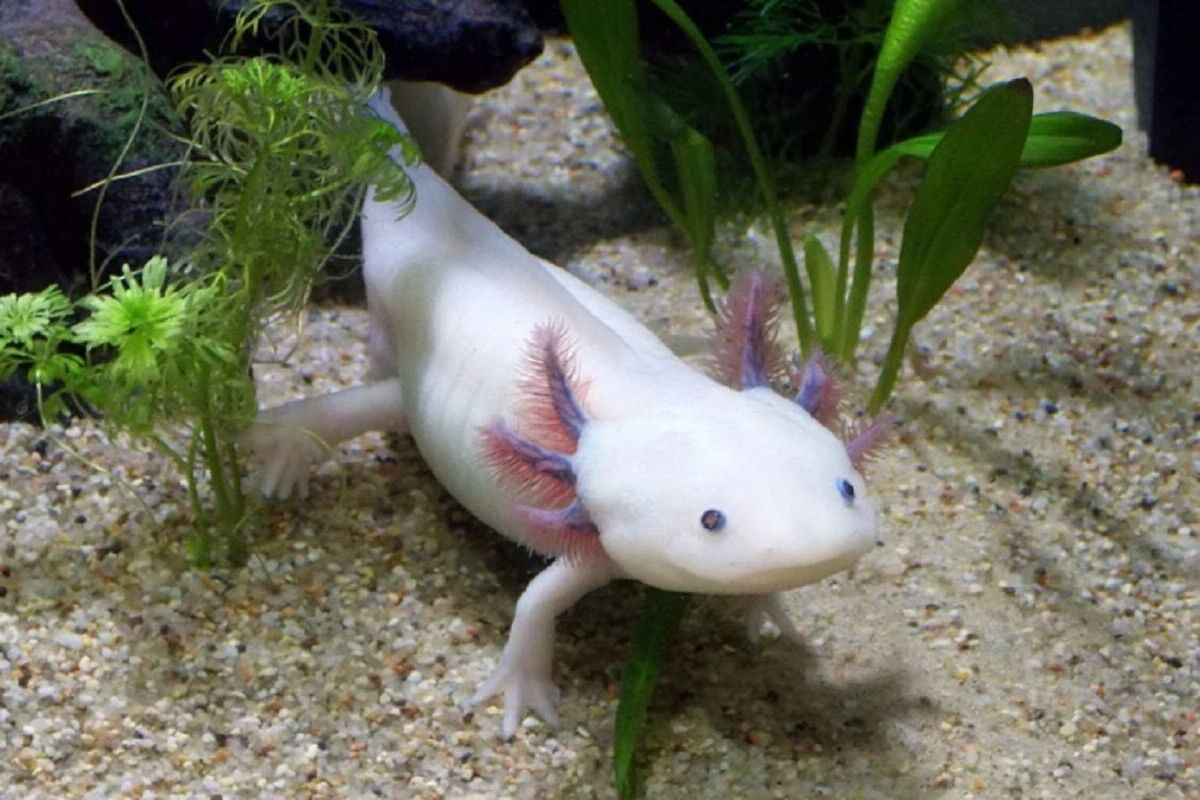Axolotls are among the most extraordinary and mysterious creatures that fascinate both scientists and ordinary people. Their appearance is unusual, and their astonishing abilities continue to be the subject of scientific research. These amphibians live in water throughout their entire lives and do not undergo full metamorphosis, which makes them unique among vertebrates. This article presents many interesting and surprising facts about axolotls that you might not know. Some may seem unbelievable, but all of them are scientifically verified.
- Axolotls can regenerate not only limbs but also internal organs. They are capable of fully restoring the heart, parts of the brain, the spinal cord, and even eyes. This remarkable ability is being studied for its potential applications in human medicine.
- Unlike most amphibians, axolotls remain in the larval stage for their entire life. They retain their external gills, tails, and aquatic lifestyle indefinitely. This phenomenon is called neoteny and is very rare in nature.
- The word “axolotl” comes from the Nahuatl language, spoken by the Aztecs, and can be translated as “water monster” or “fire spirit in water.” In Aztec mythology, the axolotl was associated with the god of death, Xolotl. According to legend, the god transformed into this creature to hide from other gods.
- In the wild, axolotls are found only in one place on Earth, in freshwater lakes and canals near Mexico City. Their natural habitats are Lake Xochimilco and the now-extinct Lake Chalco. Due to pollution and invasive species, axolotls are now critically endangered.
- Despite their declining numbers in the wild, axolotls are kept in captivity by thousands of people worldwide. They are popular in aquariums due to their unique appearance and calm behavior. Captive breeding helps preserve the species and supports scientific studies.
- Axolotls have external gills that protrude from both sides of their head and resemble feathery appendages. These gills allow them to absorb oxygen directly from the water. Their gill structure makes them easily recognizable.
- Axolotls also possess lungs, so they can breathe atmospheric air by surfacing. This allows them to survive in water with low oxygen levels. Such a dual respiratory system is rare among amphibians.
- Their coloration varies widely, from dark brown in the wild to white, pink, golden, or black in captivity. Albino varieties are especially popular in home aquariums due to their striking appearance. In the wild, darker coloration provides better camouflage from predators.
- Axolotls have decent vision, but they rely more on their sense of smell and sensitivity to vibrations in the water. This enables them to locate prey even in murky or dark environments. It also makes them effective nocturnal hunters.
- In nature, axolotls feed on worms, snails, small fish, and other aquatic organisms. In captivity, they are fed pellets, pieces of meat, or frozen foods. They are voracious predators and may even eat members of their own species.
- Though axolotls are carnivores, they are not aggressive. They wait for prey to come near and then strike quickly. This hunting strategy is energy-efficient and suits their slow-moving lifestyle.
- During reproduction, the male axolotl deposits spermatophores on the bottom of the tank, which the female then collects through her cloaca. After fertilization, she lays up to 1000 eggs, attaching them to plants or rocks. Within a few weeks, larvae hatch from the eggs.
- Axolotl cells are highly plastic, meaning they can change their function during regeneration. For example, a muscle cell can transform into a nerve or skin cell. This rare ability is of great interest in biomedical research.
- Axolotls are model organisms in the study of genetics, embryology, cancer, and tissue regeneration. Their genome is approximately ten times larger than that of humans. This makes them especially useful for studying complex biological processes.
- Despite their regenerative capabilities, axolotls are very sensitive to environmental changes. High temperatures, pollution, or poor care can lead to stress and illness. Keeping them in an aquarium requires experience and proper conditions.
- In captivity, axolotls can live up to 15 years. In the wild, their lifespan is shorter due to natural threats. Their peaceful nature and longevity make them popular as exotic pets.
- Scientists can artificially induce metamorphosis in axolotls using the hormone thyroxine. After treatment, they develop into terrestrial salamander-like forms. However, this transformation usually shortens their lifespan.
- In Mexico, the axolotl is considered a national symbol. Its image appears in art, culture, and even on banknotes. Local conservation groups are working to protect and reintroduce them into the wild.
- In the 2020s, axolotls gained popularity in pop culture. They appear in video games, animated films, and internet memes. This trend has helped raise awareness about their endangered status.
- Axolotls have no teeth, but their jaws are strong enough to grab and hold prey. They swallow their food whole without chewing. This feeding method is common among aquatic predators.
- Although they look like fish, axolotls are amphibians and have an internal structure similar to other amphibians. Their bodies are covered in mucus, which serves a protective function. They are extremely sensitive to the chemical composition of water.
These incredible facts about axolotls reveal how unique and scientifically valuable these creatures truly are. Their regenerative powers, unusual life cycle, and biological significance make them a true marvel of evolution. You might not have known many of these details, but they show why axolotls attract so much attention. These animals deserve protection, respect, and continued research.





